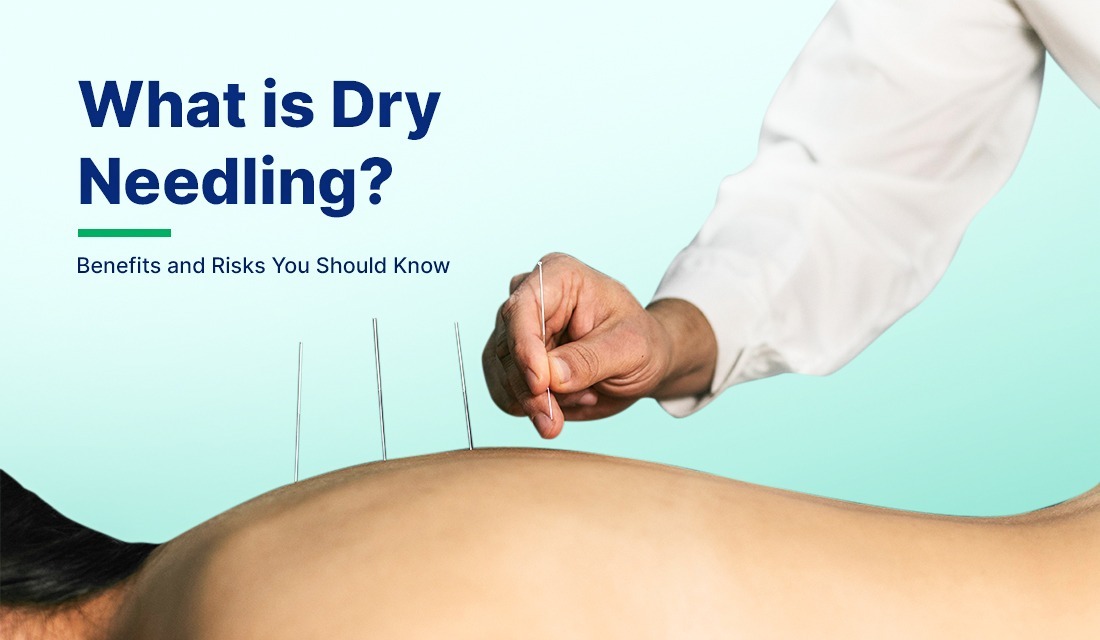To relieve severe muscle discomfort, people use a variety of procedures and treatments all over the world. Some treatments have been around for a long time, while others are very new. Some are traditional, while others are out of the ordinary.
In the spirit of unusual treatments, how about having needles inserted into your body to relieve your pain? Isn’t it a little out of the ordinary? It may be out-of-the-box, but its efficiency cannot be disputed. Are you unsure of what we’re talking about? We’re talking about dry needling treatment, and you’ll learn everything you need to know about it in this article.
What Is Dry Needling Therapy?
Dry needling physical therapy is a widely used treatment that is effective in the treatment of neuromuscular discomfort. It’s aimed at the trigger points that form in our muscles from time to time. They become extremely sensitive to touch, resulting in excruciating pain. During the dry needling procedure, solid needles are placed into trigger sites through the skin. This therapy is also beneficial in the recovery of sports injuries. Dry needling for trigger points or dry needling for myofascial trigger points, are the other names for it.
What Conditions Can Dry Needling Assist?
The following conditions can effectively be treated with dry needling techniques:
- Plantar fasciitis
- Tennis Elbow
- Iliotibial Band Syndrome (ITB)
- Muscle spasms and strains
- Back and neck pain
- Sciatica
- Muscle injuries, both acute and overuse
- Strain injuries that occur repeatedly
- Stress Headaches
- Joint discomfort
The Benefits of Dry Needling
For the following reasons, dry needling has been a popular therapeutic option for a variety of muscular problems:
- It relieves muscle spasms and discomfort
- Aids in the recovery of sports-related injuries for athletes
- Aids in the treatment of headache problems
- Aids in the treatment of neck and back pain
- Since no medication is used in this treatment, there is hardly any risk of allergic reactions
What Is a Trigger Point? What is Trigger Point Dry Needling Therapy?
A trigger point is a taut strip of skeletal muscle within a broader muscle group. Touching a trigger point can be painful, and pressing a trigger point can elicit pain in other areas of the body. The dry needling technique is used at such trigger points to target the affected tissues.
What Are the Different Types of Needles Used in Dry Needling Therapy?
Dry needling involves inserting a small filiform needle into the epidermis and stimulating the underside of myofascial trigger points, muscles, and connective tissues. The needle can be used by a physical therapist to target tissues that aren’t visible.
Physical therapists use gloves and appropriate personal protective equipment for dry needling, following the Safe Practices, Guide to Infection Prevention for Outpatient Settings, and OSHA requirements. To dispose of sterile needles, clinical sharps collectors are employed.
Dry Needling Therapy for Migraines
Dry needling, also known as trigger-point dry needling, is used to treat trigger points, which are knotted muscles caused by overuse, lack of use, or trauma. Trigger points in the upper back can radiate intense pain into the head, causing severe migraines. Specialists gently place hair-thin needles into the trigger points to relieve the radiating pain and discomfort.
Dry Needling Treatment for Neck Pain
Despite the paucity of rigorous trials demonstrating its effectiveness, dry needling is a frequent treatment for musculoskeletal disorders such as neck discomfort. Physical therapists use dry needling to treat myofascial trigger points (MTrPs), which are hypersensitive places in a perceptible taut band of muscle.
Dry Needling for Back Pain
A physical therapist uses fine filiform needles (similar to those used in acupuncture) to inject a painful trigger point in your back muscles. Blood flow to the trigger point is stimulated by gently manipulating the needles, which may help relax stiff muscles. Thus, it can alleviate discomfort in the lower back.
Dry Needling for Arthritis
Osteoarthritis develops when the protective cartilage that cushions the edges of your bones in a joint wears away. Dry needling is an effective treatment for osteoarthritis pain alleviation because it stimulates blood circulation around the joint, resulting in natural comfort.
Dry Needling for Knee Pain
Dry needling loosens tight muscles, relieves joint discomfort, and promotes blood flow to the affected area by causing knotted muscles to contract and then relax. Dry needling therapy has proven to be an effective treatment for orthopaedic patients suffering from knee pain, shoulder discomfort, hip pain, and/or back pain.
Acupuncture vs. Dry Needling
At first glance, this may appear to be comparable to acupuncture, a traditional Chinese medical procedure. But dry needling is based on modern western medical concepts.
Although the tools utilised in these two therapies are comparable, that is where the similarities end. Dry needling, unlike acupuncture, is based on pain patterns, movement limitations, posture, function, and orthopaedic examinations.
In comparison to acupuncture, dry needling is a considerably broader term that encompasses a variety of physical therapy techniques. To put it another way, dry needling isn’t just a stand-alone technique.
Is Dry Needling Painful?
The needle does not hurt when it is inserted since it is very thin. When you insert the needle into the muscle, it may twitch, which might make it feel sore. For a day or two afterwards, you might feel a little muscular ache or tightness, as if you worked out that muscle.
Is Dry Needling a Safe Procedure? What are the Side Effects of Dry Needling?
Dry needling is a technique that is generally considered to be safe. Your dry-needling-trained physiotherapist or osteopath will explain the dangers and decide if this treatment is right for you based on your condition and medical history.
Dry needling has the following side effects:
- You will feel a little pinprick and potentially a muscle twitch response as the needle is put into your body. All of these are normal and have had positive results in terms of symptom reduction.
- Patients may suffer discomfort after treatment, although this normally goes away within 24 to 48 hours.
- As dry needling is a minimally invasive procedure, it carries some hazards, such as local bleeding, bruising, infection, and pain. The chances of infection are very low when single-wrapped, sterilised needles are used.
- Dry needling causes extremely few serious side effects.
What Are the Dry Needling Contraindications?
- A tendency to bleed excessively
- An immune system that is compromised
- Vascular disease
- Diabetes
- Pregnancy
- Children
- Frail patients
- Patients suffering from epilepsy
Dry Needling Therapy by Physical Therapist
Dry needling is a technique used by physical therapists to reduce pain and enhance range of motion by releasing or inactivating trigger points. According to preliminary research, dry needling improves pain control, reduces muscle tension, and normalises motor dysfunctions at the sites where nerve impulses are delivered to muscles. This can help the patient return to active rehabilitation more quickly.
Dry Needling Therapy In Dubai
Dry needling treatment in Dubai offers effective therapy for muscular discomforts and pains. So, if you have any doubts regarding dry needling therapy, dry needling benefits, or dry needling side effects, you can resort to Lana Life Care. And if you’re in search of the details for “dry needling therapy near me,” you have to go no further than Lana. Contact us for exceptional and compassionate home health care services in Dubai.
Dry needling physical therapy is a widely used treatment that is effective in the treatment of neuromuscular disorders.
Dry needling therapy is a procedure conducted by professional, qualified, and registered physical therapists. For the treatment of neuromusculoskeletal discomfort and mobility limitations, a thin monofilament needle enters the skin and addresses underlying muscular trigger points.
There are contraindications to dry needling treatment during pregnancy. So, it is always advised to get an expert medical opinion before going for any sort of treatment.
There are risks associated with dry needling. One of the issues is that it is semi-regulated. But under expert supervision, dry needling can help you ease your pain and muscular discomfort.

